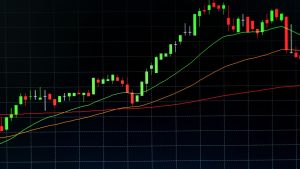One of the scariest things in trading is the unknown, the event you never saw coming. In finance, those are often called black swan events. In crypto, their effects can be magnified because of leverage, speculation, and structural vulnerabilities.
Understanding black swans isn’t just theoretical, it’s a survival skill.
Let’s break it down.
What Is a Black Swan Event?
The term “black swan” comes from Nassim Nicholas Taleb’s work. A true black swan has three defining characteristics:
- Rare & Unpredictable
It lies outside the realm of normal expectations – you don’t routinely brace for it. - High Impact
When it happens, it causes damage (or upside) far beyond what normal risk models account for. - Retrospective Predictability
After it occurs, people try to rationalize it as if “it could have been seen,” even though it was not forecastable.
In crypto, black swans can come from many directions: catastrophic hacks, regulatory upheavals, exchange collapse, macro contagion, or technological failure.
Why Crypto Is Especially Vulnerable
Crypto’s architecture and market structure make black swans more dangerous here than in many other asset classes:
- Leverage & Derivatives Exposure
Many traders use high leverage. When a shock hits, liquidations cascade and amplify the move. - Liquidity Fragility
In moves of panic, liquidity can vanish. Order books thin, slippage appears, and sellers can’t exit cleanly. - Interconnected Risks
Centralized exchanges, lending protocols, stablecoins, bridges – all are interdependent. If one fails, it can ripple across the system. - Regulatory & Policy Risk
Governments can rapidly change laws, freeze assets, decommission exchanges, or ban key activities — and the shock is sudden. - Speculation & Sentiment
Crypto markets are driven heavily by sentiment. In a black swan, fear and panic dominate, accelerating declines beyond “logical” levels.
Past Crypto Black Swans (and What We Learned)
Here are a few that burned into crypto history:
- Mt. Gox Hack & Collapse (2014)
At its peak, Mt. Gox handled most of Bitcoin’s trading. The exchange’s security vulnerabilities and eventual failure wiped billions in value, shattered trust, and exposed the fragility of centralized custody. - Terra / UST Depeg (2022)
The algorithmic stablecoin UST lost its peg, LUNA imploded, and that crisis spread across DeFi, leading to massive liquidations and a prolonged bear cycle. - FTX Collapse (2022)
What appeared as a major exchange and ecosystem powerhouse collapsed amid insolvency and fraud, leaving many projects and investors exposed and creating a contagion across crypto credit. - Macro / Liquidity Shocks
Events like the COVID-19 crash, or sudden shifts in global liquidity, have shaken all markets — and crypto is often among the first to feel the full brunt.
Each of these shows how quickly trust can be destroyed — and how long recovery takes.
How a Black Swan Unfolds: The Mechanics
Here’s the typical path:
- Trigger Event Occurs
Could be a hack, regulatory edict, market shock, or macro surprise. - Panic Selling / Liquidity Vacuum
As uncertainty spreads, traders rush to exit. Liquidity dries up, slippage spikes, and orders stack up. - Cascade & Liquidations
Forced selling from leveraged positions forces further losses. This magnifies the decline. - Contagion / Systemic Impact
Exchanges, lending platforms, and interoperable protocols feel the pressure. Funding freezes, risk aversion spreads, and capital flees. - Aftershock & Overcorrection
Even assets that should be safe get punished. Sentiment flips toward “crypto is broken,” and recovery is slow and fragile.
What to Watch: Early Warning Signals
You can’t predict a black swan — but you can look for conditions where one becomes likelier:
- Deteriorating Liquidity Metrics
Thin order books, low-volume zones, or rising spreads can indicate fragility. - Centralization Risks
High concentration of trading volume or control in a single exchange, or too much dependence on stablecoins whose backing is opaque. - Excessive Leverage / Positioning
When most traders are overleveraged, any shock can become a cascade. - Regulatory Crackdowns or Policy Warnings
Sudden government statements, unannounced audits, or legal actions in key jurisdictions. - Systemic Weaknesses
Bugs in core smart contracts, exploits in bridges, or failures in cross-chain architecture.
When these conditions align, the likelihood of a black swan increases — even if you don’t know when it will hit.
How to Survive & Thrive Through One
If you’re preparing your trading strategy to face the unexpected, here’s how to build resilience:
✅ Risk Management & Position Sizing
Keep your exposure small. A black swan should never blow out your account. Use tight stops or options hedges.
✅ Diversification
Don’t hold all your eggs in one crypto, protocol, or region. Spread across assets and chains.
✅ Liquidity Buffer
Always have capital in stable forms (e.g. stablecoins) ready to redeploy after the crash.
✅ Avoid Maximum Leverage
Even “safe” trades become dangerous when markets swing violently. Leverage kills in black swans.
✅ Monitor Key Platforms & Smart Contracts
Know which projects or exchanges are riskier. Avoid overexposed pooling sites or bridges with weak audits.
✅ Emotional Preparedness
Don’t panic. Most traders capitulate too early or too late. Stay rational and follow your plan.
What a Black Swan Could Do to Market Structure
- Capitulation Moves
The sharpest crashes often happen near market bottoms, wiping out weak hands. - Sector Rotation
Money may shift from risky alts to more “established” coins like BTC or ETH. - Protocol Failures / Reassessments
Weak or untested protocols may collapse. Survivors grow stronger as capital consolidates. - Stronger Regulation / Oversight
Governments often respond with stricter rules or bans after a crisis. - New Narratives & Rebuilding
After the crash, the next cycle often builds around more sound protocols, better audits, stronger decentralization, and more prudence.
Final Thoughts
Black swan events are the ultimate stress test for crypto markets. They expose flaws, wipe out hype, and force structural evolution.
While you can’t forecast exactly when one will strike, you can prepare. Protect your capital, stay vigilant, and stay humble.
The next black swan might not be obvious – but the resilient, disciplined traders will be the ones still standing when the fog lifts.
Trade Safer With EPIQ
At EPIQ Trading Floor, we help traders build guardrails before disaster hits:
- ✅ Dashboards showing liquidity metrics, leverage heatmaps, token concentration
- ✅ Alerts when risk conditions align (thin liquidity, regulatory flags, overleveraging)
- ✅ Education modules on tail risk management & survival strategies
- ✅ A community that expects volatility and plans accordingly
👉 Start your 3-day free trial today and build the resilience traders complain they “wish they had” before the next crypto storm hits.
Not Financial Advice (NFA): This content is for educational purposes only and does not constitute financial or investment advice. Always do your own research and manage risk responsibly.










Responses